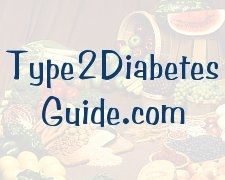Canadian Diabetes Info - How is Type 2 Diabetes Diagnosed?
Measuring Blood Glucose Levels
In Canada, blood glucose levels are measured in mmol/L instead of mg/dL as it's done in the United States. Doctors may differ in opinion as to what blood sugar level constitutes "normal" and "pre-diabetic".
Here is a simple conversion chart for blood sugar levels that will help you convert mg/dl to mmol/l. For a quick calculation, 18 mg/dL of blood glucose = 1 mmol/L of blood glucose.
If your blood glucose reading tests higher than normal, the test will need to be repeated on a different day to confirm the diagnosis of diabetes.
Diagnosing Diabetes in Canada
Fasting Blood Glucose
Normal fasting blood sugar range is from 4.0 to 6.0 mmol/L. Your fasting blood glucose is the level of sugar in your blood after not eating for 8 to 12 hours. It is usually measured first thing in the morning. A reading of 7.0 mmol/L or higher is considered diabetic. A reading between 6.1 mmol/L and 6.9 mmol/L is considered prediabetes.
Post-Prandial Blood Sugar
The normal blood sugar range two hours after eating is between 5.0 to 8.0 mmol/L. An oral glucose tolerance test (see below) can be given to check blood glucose readings after two hours.
Hemoglobin A1C
A normal A1C level (an average of your blood glucose over the past 3 months) is 6.0% or less. Prediabetes is considered from 6.1% to 6.4%. An A1C of 6.5% or higher is considered diabetic. You don't need to fast before getting an A1C test so it's easier to go in and get it done any time.
Oral Glucose Tolerance Test
An oral glucose tolerance test is when you're given a sweetened drink prior to getting the blood test. Two hours after consuming the drink, normal blood sugar is 11.0 mmol/L or less. A higher reading is an indicator that you may have type 2 diabetes, especially if your fasting blood glucose is also in the diabetic range.
Taking Charge of Your Health
If your blood test results do not indicate diabetes at this time, but you are experiencing signs of diabetes, discuss it honestly and openly with your doctor. You may instead have prediabetes. This is the stage where blood glucose readings are higher than normal but not high enough to be diagnosed as diabetes. The good news is that not everyone with prediabetes will develop diabetes in the future. You can take steps to lower the risk by getting enough exercise, losing weight if you need to, and eating a healthy diet.
People at high risk for diabetes may want to consider investing in a glucose meter to check their blood sugar readings at home. By doing so, you would be able to see if or when your readings start to look outside the range for normal blood sugar levels. You can then talk to your doctor or ask to get re-tested.
Canadian diabetes info is essentially the same as diabetes information
applicable to any other country... but in Canada, mmol/L is the unit used
to measure blood glucose readings (glucometers available in Canada
are calibrated to display readings in these units). Risks, symptoms, prevention
and treatment of Type 2 Diabetes remains the same worldwide. If you have
just moved to Canada from another country, talk to a doctor to discuss the
possibility of getting a blood glucose test done so that you have a baseline
reading to refer to.
What Causes Diabetes?
Insulin Resistance
Signs of Diabetes
Hypoglycemia
Hyperglycemia
Glycemic Index
Diabetic Recipes
Feline Diabetes
Diabetes Diet Sheet
How to Control Diabetes Without Medication
What Foods Have a Low Glycemic Index?
Conversion Chart for Blood Sugar Levels




